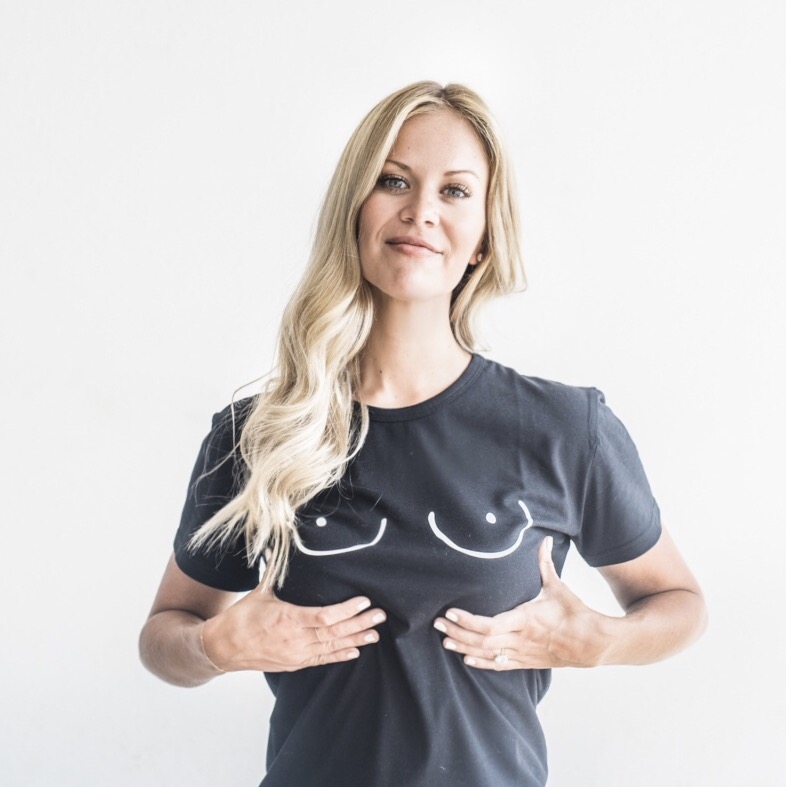October is Breast Cancer Awareness Month. That means we wear pink on non-Wednesdays. It’s also a good time to check in with your beloved boobies. Part of adulting is performing a breast self-exam every month.
One in every eight American women will get breast cancer in their lifetime. ONE. IN. EIGHT. One in every thirty-seven women loses their life to the disease. Breast cancer is the second leading cause of death in women (after lung cancer).
The cause of breast cancer is still unknown. The best thing we can do protect ourselves is to take matters into our own hands and perform breast self-exams every month.
THIS IS A REALLY BIG DEAL. Data shows that 40% of breast cancer is detected because a woman found a lump in her own breast. So, be your own breast friend and exam yo’self.
Breast self-exam quick facts:
- You need to know your boobies inside and out. When you’re familiar with how your breasts look and feel, you’ll be able to recognize any abnormalities.
- Examine your breasts once a month (THAT’S 12X A YEAR PPL)
- Examine your breasts at the same time every month: one week after your period. This is the time of your menstrual cycle when your breasts are the least swollen and tender. Idea: If you’re on the pill, mark your pill pack one week in. Otherwise, maybe Siri or Alexa can remind you.
- Once you turn 40, it’s mammogram time. Get it done once a year.
In case you’re lost, I’m not a doctor. The steps below are the official recommendations of the National Breast Cancer Foundation (though “boobies” may not be their EXACT words…).
You need to examine your boobies from 3 different positions: in the shower, in front of a mirror, and lying down.
1. In the shower
Hop in the shower and wet your hands and breasts. Use the pads of your fingers. In a circular pattern, move your fingers around your entire breast and armpit area from the outside in. You’re looking for a lump, thickening, hardened knot, or any other unusual changes.
2. In front of a mirror
Stand in front of a mirror and examine your breasts visually. Start with your arms at your sides, then examine again with your arms above your head. You’re looking for swelling, dimpling or scaling of the skin, change or inversion of nipples, or change in contour. Next, press your hands on your hips and flex your chest muscles (and #flexyourfemale). Your boobs won’t match perfectly (unless you’re insanely lucky), but again, look for dimpling, puckering, or changes (especially if it’s only on one side).
3. Lying down
Lie down. Don’t take a nap (yet). Your breast tissue will spread evenly along your chest wall. Put a pillow under your right shoulder and right arm (behind your head). Use the pads of your fingers to gently check for abnormalities (right hand for left boob, left hand for right boob). Move in a circular pattern, all over your breast and armpit three times (with light, medium, and firm pressure). Next, squeeze your nipple (it’s part of the exam!). You’re looking for discharge and lumps.
What if you find something?
Other than laziness, the #1 reason why I haven’t done breast self-exams in the past is that I was afraid of finding something. It’s totally normal to be scared (that’s what happens when you do something brave!). If you find something, don’t freak out. Eight out of ten lumps are benign (not cancerous). Just go to the doctor and get it checked out.
To every woman reading this: let’s all make a pact to do breast self-exams every month. Don’t say “nbd I’ll do it later.” Because you know what later can turn into? NEVER!
Make sure all your friends are #breastfriends too. Share this article in your #squad group text thread. It could save a LIFE.

Originally published at brainsoverblonde.com


